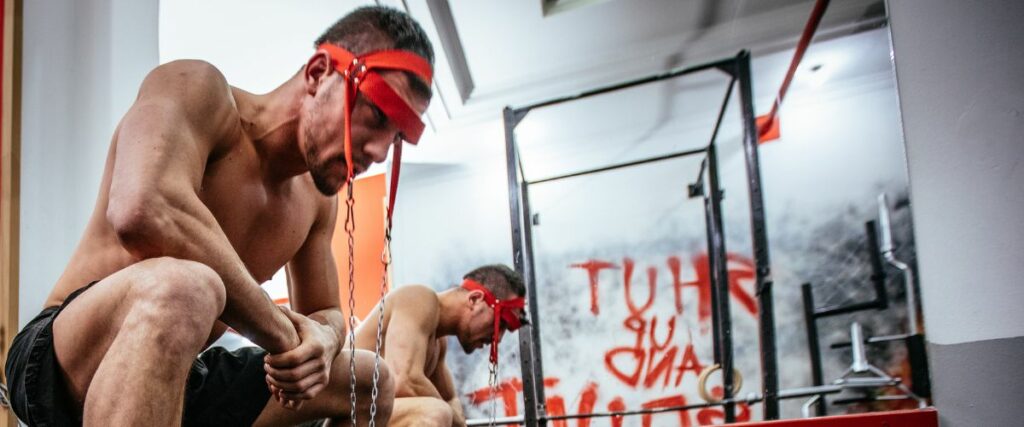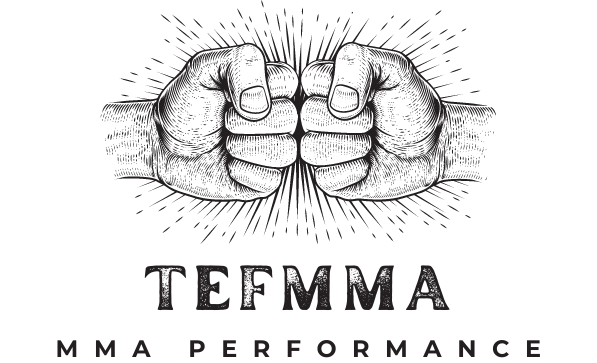The neck holds the most essential part of the body and is considered the shock absorber for the head. MMA fighters, in particular, need to withstand impact and pressure greater than most other athletes. While the neck is perhaps not the first muscle group you think about training in MMA, it’s crucial to develop.
Fighters train their necks to be less susceptible to injury from powerful strikes to the head. A strong neck lowers the chance of injury and improves the ability to finish techniques. To strengthen the neck muscles, a fighter must do specific strength exercises in all directions in addition to isometric exercises.
Having a strong neck is undoubtedly important in martial arts, both for a fight and in the training room, but let’s find out precisely what neck training for MMA is.
Why Do Fighters Train Their Necks?
Having a strong neck has many benefits in a lot of sports. Especially in contact sports with a high chance of a head knock or ball sports like soccer, having a well-developed neck can save a lot of trouble and injuries.
This is even more important for fighters whose head is a primary target for either strikes or holds and submissions.
Despite the importance of neck strength, many martial artists neglect it, especially those who do not compete. But you should not take neck training lightly. Some research has shown that improving neck strength reduces the chance of concussions and various neck injuries.
However, according to Sweet Science of Fighting, neck training may increase the risk of concussion or traumatic brain injury.
The ability to withstand a punch in a fight is crucial for success in the ring or cage. Having a strong neck helps to prevent your opponent from breaking your posture and keeps your neck healthy as you constantly have training partners squeezing and cranking your neck.
Neck size may not be as important as neck strength, as neck strength and size are not always indicative of each other.
Do MMA Fighters Train Their Necks?

A strong neck is vital for strikers, but even more so for MMA fighters. In addition to the striking, grappling puts another layer of pressure on the head and neck. Clinching and wrestling are very heavy on the neck musculature.
Many submissions, like chokes and neck cracks, directly target the neck, and strengthening it will help withstand submission attempts better and reduce the chance of lasting injuries resulting from painful holds.
Neck injuries are genuinely awful, and a slipped disk, for example, can take you out of the training room for weeks.
However, having a strong neck is not enough. It must also be mobile. The neck is generally responsible for the following movements.
- Neck Lateral Flexion
- Neck Rotation
- Neck Extension
- Neck Flexion
But very rarely do these movements happen in isolation in any real context. Additionally, the neck is required to perform heavy isometric contractions to resist movement or pressure from the opponent.
This means that to develop a sturdy neck for MMA fully, you need to include in your regimen concentric, isometric, and rotational exercises.
How to Train the Neck Muscles Using Weights?
Neck Flexion And Supine Flexion
The most basic way to train the neck is by laying down on a bench or even a sofa, letting your head hang off the ledge, and nodding your head in a full range of motion.
This is usually done with weights, but if you have no experience, you can start by doing the motions using just your head weight. Some professional boxers often do these without weights in very high rep ranges.
Neck Lateral Flexion
The lateral flexion follows the same principle as the regular flexion, and it’s also essential for MMA fighters who need lateral neck strength to resist submissions.
Again, you can do this on a bench or any other surface that lets your head hang free. Feel free to start without weights until your neck becomes stronger.
Neck Harness
A more hardcore neck exercise is the neck harness. A bonus is that it looks like a torture device and makes you look extra tough. Jokes aside, using a neck harness can load the neck much heavier than holding a plate with your hands.
Band Rotations
Neck rotations are harder to do without proper equipment. You can use a band to some extent, but the best piece of equipment is by using the Iron Neck. Most people skip the rotations, which are equally important to other movements.
Isometric Holds
Isometric holds are crucial for fighters as they need to resist submissions and withstand attempts to break their position in grappling or clinching battles. Performing isometric holds is very easy with a band. You pull the band and hold, alternating all 4 directions.
Iron Neck
The Iron Neck is an excellent piece of equipment designed specifically to train the neck. It’s pretty much unrivaled in its versatility. You can use it to develop every aspect of neck strength and endurance. If you have access to one, it will most likely be the only equipment you use for that purpose.
How To Train the Neck Without Equipment?
The good thing is that the neck can be trained and strengthened effectively without equipment. The principles and exercises are pretty much the same as the ones outlined above. You need to do flexion, extension, and lateral flexion.
When you have no weights, you will need to bump the reps quite a bit. An excellent option to add resistance is using your hands instead of weights. Just push your head with controlled force in the opposite direction of your flexion.
You can easily do isometric holds with your own hands. You can apply a reasonable amount of pressure that removes the need to use a band. Iso holds are often done with a partner as well.
The advantage, instead of doing it yourself, is that a partner can apply equal pressure at any angle. An even better version of the partner isometrics is the blind reactive exercise, where you will not know the direction and duration of the pressure.
Here is a good example of a boxing neck routine with bodyweight and a partner:
Or a slightly different approach to neck training without any equipment:
Is Training the Neck Worth it?
Some people believe that training with compound movements with heavy weights will also develop the neck muscles. But the research shows that this is not the case. Neck muscles need separate training in all planes of movement to be sufficiently strong.
The good thing is that you don’t need too much training to achieve results. Two 10-15 minute sessions that include all 3 types of movements per week alongside your martial arts training should be enough to build a neck ready for combat.
How to Train the Neck Safely?
Especially in the beginning, neck training can be quite hard. It’s an often neglected muscle group. If you are starting, it’s best to take it slow and light to avoid getting injuries instead of preventing them.
A good idea is to start with the movements without any weights. The head’s weight is enough in the beginning to build the initial strength. Then begin implementing small weights and gradually increase them once you feel comfortable.
You can do isometric exercises with a band and easily control the force. A viable option is to use your hands to apply light pressure and increase the force with time. You will be surprised at how much pressure you can apply with your own hands and can build pretty decent strength that way.
However, a common bodyweight exercise you should avoid is the wrestling bridge. Supporting most of your weight on the neck in a bridge position and moving in multiple directions will undeniably develop strong muscles. It is perfect for wrestling, where you must sometimes assume this position to prevent a pin.
But it also compresses the neck in the neck and loads them with your body weight, which can lead to disk or soft tissue damage. If you are not wrestling and will not use the head bridge in practice and competition, it is best to avoid it and go for safer neck strengthening exercises.
Summary
A strong and mobile neck is essential for fighters and martial artists. The neck muscles may reduce the risk of concussions by absorbing some of the impact and preventing the head from swinging after being hit, making them essential for strikers.
Grapplers need a strong neck to endure submissions and hold certain positions, while MMA fighters need it for both reasons.
Be smart and include neck-specific exercises that cover all the planes of movement in your training. You will avoid a lot of injuries and possible defeats.
